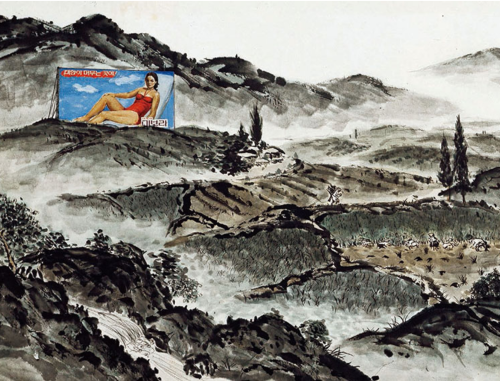
Lim Ok-sang’s Landscape II, 1976, Ink and oil on rice paper, 64 × 128 cm, featured in this issue of Azalea.
Azalea: Journal of Korean Literature & Culture volume 11 opens with the following note from editor Young-Jun Lee:
The Korean peninsula is now in the midst of a series of remarkable and dramatic changes. People the world over are surprised, curious, and relieved, especially those who feared imminent war on the peninsula. In addition, the first female president of Korea is now in prison, and her predecessor was also arrested and soon will be tried. The current president, who has a very high approval rating, used the Winter Olympics as a stage for international diplomacy and led North Korea to the bargaining table. We do not know if Kim Jong Un will give up nuclear weapons, or if Trump will sign a peace treaty or pledge economic cooperation, but it is no exaggeration to say that these changes are seismic.
With the news that North Korea was developing nuclear weapons and conducting missile tests, and that evacuation drills were taking place in Japan and Hawaii, people with relatives in Korea would call them, worried about their safety. There was also contrasting news. Some foreign media were surprised to hear that nothing appeared to be happening in Seoul, and its inhabitants were going about their daily lives despite the threat of imminent war. In turbulent times, art enables us to grasp these apparent contradictions and complexities. Art can give us insight into the minds of Koreans who are experiencing and responding to events as they happen. This volume of Azalea presents outstanding work that illuminates the Korean spirit under conditions both ordinary and extraordinary.
Writer in Focus: Cheon Myeong-Gwan
Excerpt from Whale
Cheon Myeong-gwan, Jae Won Chung
Twenty
Cheon Myeong-gwan, Jamie Chang
Excerpt from My Uncle Bruce Lee
Cheon Myeong-gwan, Susanna Lim
Pink
Cheon Myeong-gwan, Jamie Chang
A Conversation with Cheon Myeong-gwan
Jamie Chang
Fiction
A Journal from the Alpha-Omega Kosiwon
Park Min-gyu, Kyung Hyun Kim, Sue Heun Kim
Roadkill
Yun Ko Eun, Lizzie Buehler
Sister Thief
Bae Suah, Janet Hong
Forever a Narrator
Kim Ae-ran, Eungee Sung
Poetry
Poems by Kim Joong-Il, Lee Young-ju, Han Kang, Lee Jangwook, Ha Jaeyoun, and An Heeyeon.
Another Perspective
Raising the Profile of Korean Literature Overseas
Seong-Kon Kim
Special Feature: Yi T’aeujun
Introduction to Yi T’aejun’s Travels in China
Jun Youb Lee
Excerpt from Travels in China: A Great New China
Yi T’aejun, Jun Youb Lee
Images
Images and Image Index
Find the full text of the issue at Project MUSE
Sign up to receive e-mail alerts about new issues from Project MUSE
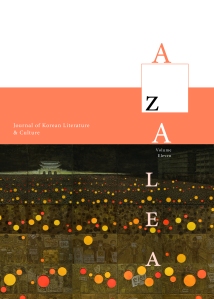 About the Journal
About the Journal
Azalea promotes Korean literature among English-language readers. Azalea introduces to the world new writers as well as promising translators, providing the academic community of Korean studies with well-translated texts for college courses. Writers from around the world also share their experience of Korean literature or culture with wider audiences.
Subscriptions
Subscriptions for both individuals and institutions are available here.


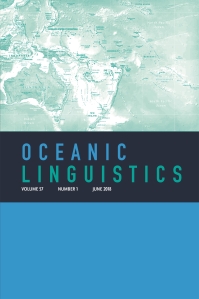
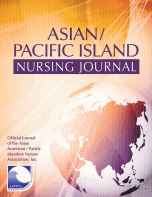
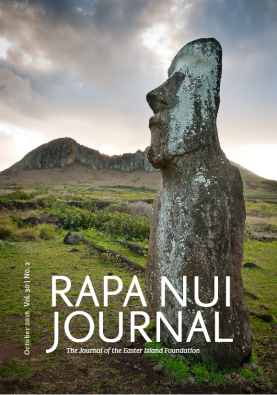
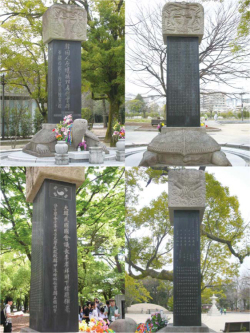
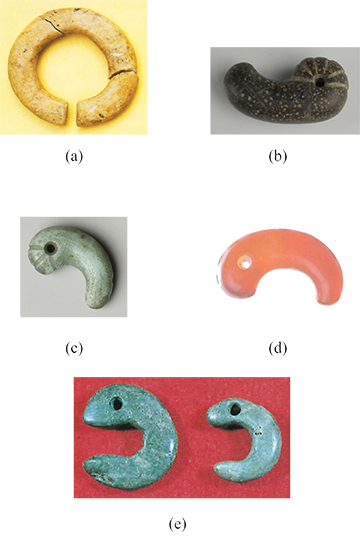
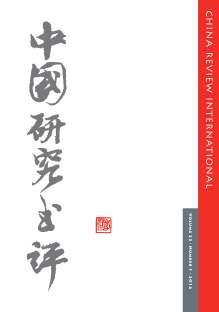
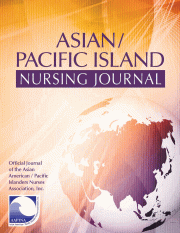
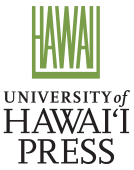

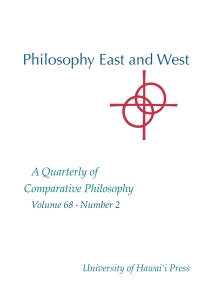 About the Journal
About the Journal